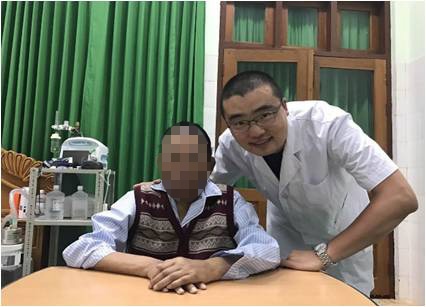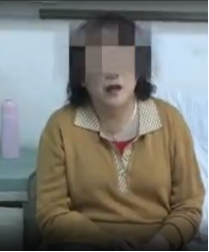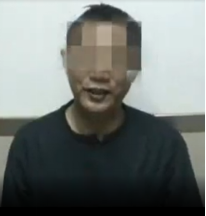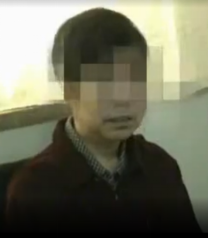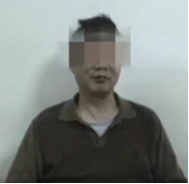
Mr. Ji is a Chinese 54 years old male patient suffering from motor neuron disease (ALS). His disease onset was from May, 2004, then he was diagnosed as motor neuron disease in local hospital in March, 2005. He received 1st round stem cell treatment in our hospital in November, 2005, 1 year after the disease onset; he received 2nd round stem cell treatment in our hospital in March, 2006, 2 years after the disease onset.
• His head-turning ability was feeble. He was unable to shrug his shoulders. There were conspicuous signs of trailer syndrome in his upper limbs. The escaping muscles, as well as the big and small thenar muscles and shoulder muscles, had atrophied. This muscle atrophy not only affected his appearance but also severely restricted his upper- limb functionality, making even simple movements like reaching for an object a challenging task.
• In terms of muscle strength, the distal muscle strength of his left upper limb measured 2 grades, while the proximal muscle strength was a mere 0 grade. Similarly, the distal muscle strength of his right upper limb was 2 grades, with the proximal muscle strength at 0 grade. These low muscle - strength grades indicated a significant loss of muscle power, which greatly impaired his ability to perform tasks that required both fine and gross motor skills in his upper extremities.
• The muscular tension was within the normal range, yet the tendon reflex was weak. A bilateral Hoffman sign was detected as positive (+). For his lower limbs, the muscle strength was 3 - grades, the muscular tension was normal, and the tendon reflex was also normal. The presence of the right Babinski’s sign (+) suggested possible neurological abnormalities. However, his neck was soft, and Kernig’s sign was negative (-). The deep and superficial sensations, pain perception, and temperature sensation throughout his body were normal, and proprioception was present. Notably, the temperature of his hands and feet was low, which could potentially be related to poor blood circulation or the underlying neurological condition.
• Regarding the auxiliary examination, the electromyogram (EMG) conducted at Peking University Third Hospital in January 2003 indicated extensive neurological damages. This EMG result provided crucial diagnostic information, highlighting the widespread nature of the nerve - related issues that were contributing to his various physical symptoms.
First Course of Stem Cell Treatment (Nov 2005)
Outcomes After the First Course of Treatment
•Easier Breathing in Supine Position
A substantial improvement has been noticed in his respiratory function when lying on his back. In the past, this position likely caused him discomfort and breathing difficulties, perhaps due to muscle weakness or a compromised respiratory system. However, now he can breathe more easily in this posture. This not only enhances his comfort during rest but also has positive implications for his overall oxygen intake.
•Improved Head - Straightening Ability
He has shown an ability to keep his head straight for a certain period. Previously, maintaining an upright head position might have been a struggle, perhaps due to muscle atrophy or weakness in the neck.
•Enhanced Right Lower Limb Sensation
He reports that his right lower limb feels stronger and more relaxed. Muscle weakness and tightness in the lower limbs can severely limit mobility and cause discomfort. The perception of increased strength in his right lower limb implies that there has been an improvement in muscle function. This could potentially lead to better walking ability, as a stronger limb can support his body weight more effectively.
•Clearer Speech
One of the most noticeable improvements is in his speech. His speech is now much clearer. It also gives him a greater sense of confidence and independence.
Progress Summary & Future Outlook
The patient's recent improvements are highly encouraging. With easier breathing while lying down, better head control, a stronger right lower limb, and clearer speech, the future looks promising. In the coming days, he may achieve more stable breathing in various postures, gain the ability to hold his head up for even longer. His limb strength could further increase, potentially allowing for more complex movements. Continued speech improvement may enable seamless communication, gradually leading to a more normal and fulfilling life.
